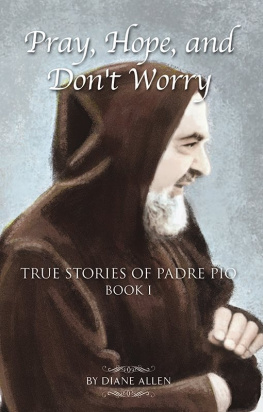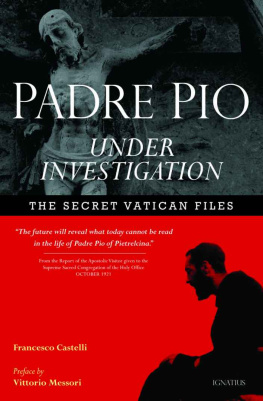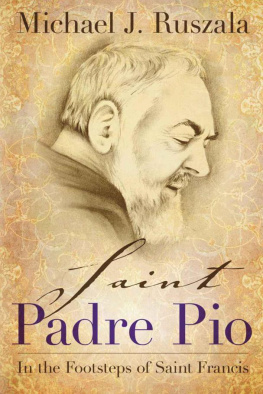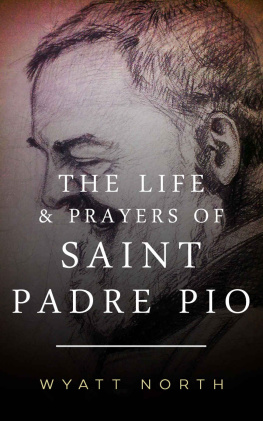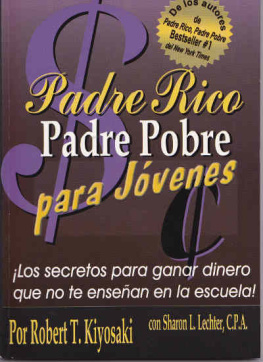St. Padre Pio - The Agony of Jesus
Here you can read online St. Padre Pio - The Agony of Jesus full text of the book (entire story) in english for free. Download pdf and epub, get meaning, cover and reviews about this ebook. year: 2015, publisher: TAN Books, genre: Science. Description of the work, (preface) as well as reviews are available. Best literature library LitArk.com created for fans of good reading and offers a wide selection of genres:
Romance novel
Science fiction
Adventure
Detective
Science
History
Home and family
Prose
Art
Politics
Computer
Non-fiction
Religion
Business
Children
Humor
Choose a favorite category and find really read worthwhile books. Enjoy immersion in the world of imagination, feel the emotions of the characters or learn something new for yourself, make an fascinating discovery.

- Book:The Agony of Jesus
- Author:
- Publisher:TAN Books
- Genre:
- Year:2015
- Rating:5 / 5
- Favourites:Add to favourites
- Your mark:
- 100
- 1
- 2
- 3
- 4
- 5
The Agony of Jesus: summary, description and annotation
We offer to read an annotation, description, summary or preface (depends on what the author of the book "The Agony of Jesus" wrote himself). If you haven't found the necessary information about the book — write in the comments, we will try to find it.
The Agony of Jesus — read online for free the complete book (whole text) full work
Below is the text of the book, divided by pages. System saving the place of the last page read, allows you to conveniently read the book "The Agony of Jesus" online for free, without having to search again every time where you left off. Put a bookmark, and you can go to the page where you finished reading at any time.
Font size:
Interval:
Bookmark:
The Agony of Jesus
In the Garden of
Gethsemane
St. Padre Pio of
Pietrelcina, O.F.M.
CAP.
Imprimatur: |  | JOANNES GREGORIUS MURRAY, |
Copyright 1974 by TAN Books.
Originally published by Fathers Rumble and Carty, Radio Replies Press, Inc., St. Paul, Minn. U.S.A.
Complete and Unabridged
Padre Pio celebrated the 50th anniversary of his stigmata on September 20, 1968. Three days later, on September 23, 1968, he passed away. Padre Pio was canonized on June 16, 2002.
The photographs used in this booklet are inserted with the permission of the copyright owner, Federico Abresch of San Giovanni Rotondo, Foggia, Italy.
Front cover photo courtesy of National Center for Padre Pio.
TAN Books
Charlotte, North Carolina
www.TANBooks.com
2013
Editors Foreword
Among some writings in my possession are those of a devout religious, to whom I am bound by the bond of blood, the priesthood and the Seraphic vocation as well as a common birthplace. They include this meditation on THE AGONY OF JESUS IN THE GARDEN OF GETHSEMANE, from which my spirit draws motives for an ever greater devotion to the most sacred Humanity of Christ. Certain that the spread of this meditation would produce much good in souls, who from the Passion of Jesus draw the daily food for their life of union with God, I believed that I would perform a meritorious deed in having it printed.
May Jesus suffering in the Garden find our hearts always ready to respond to the inspirations of grace in order to act in such a manner that all fulfill in their members as St. Paul says:... what is lacking of the sufferings of Christ. (Colossians 1:24)
Fr. Ezechia Cardone, O.F.M.
Benevento, at St. Paschal, March 25, 1952.
Translators Preface
As mentioned in the Foreword of the Editor, the original manuscript of this meditation is in his possession. Fr. Ezechia is a cousin of Fr. Pio of Pietrelcina, O.F.M. Cap., the author, who wrote the meditation many years ago. Fr. Ezechia, wishing to share this treasure with others obtained the permission both of his superiors and of Fr. Pio to have it printed. He likewise gave the permission for the English translation and its publication.
When beginners in the spiritual life are first introduced to mental prayer they are taught methods, plans, etc. of meditation. First the preparatory prayer, then a vivid representation of a Gospel scene, which should be contemplated, considering persons, actions, words, possible emotions of those in the scene. From this consideration the soul proceeds to acts of love, contrition, humility, petition, resignation to Gods Will, etc., as the subject matter may suggest. At the end comes the application and prayer for grace to practice some virtue.
Some, not understanding the nature of true prayer (which is conversation with God) make the big mistake of thinking that each of these parts must be kept as in an airtight compartment, one may not interfere with the other, none may overlap. Contemplating a scene, thinking over a truth is not yet prayer. In most cases it is a necessary preparation. It is fuel but it is not yet fire. When affections arise the intellectual work should ceaseeven if this happens at the very beginning. When the affections seem to fade away, the mind turns again to the scene or truthmore fuel is sought for the firelove. The consideration has its proper value. The deeper the impression, the deeper the affections, with the help of grace, of course. Thus the various so-called parts of the plan of meditation must be interwoven as the soul is moved by grace. After all prayer is a response to a movement of grace. It is a: Yes, Father! to an inspiration from above.
This meditation by Fr. Pio of Pietrelcina, O.F.M.Cap., is an excellent example of how the soul freely gives itself up to the movements of grace. Freely the various parts of meditation are interwoven; thoughts, affections, petitions flow naturally.
The beautiful preparatory prayer humbly beseeches the Holy Spirit for enlightenment and for an inflaming of the heart, to make a good meditation on the Passion of Christ. Our Sorrowful Mother is asked to guide him, and the Guardian Angel to guard his faculties in this prayer.
Each of the four parts begins with a picture of the scene. But that is not enough. Throughout the meditation we get glimpses of the unfolding of the drama, the most sacred and terrifying drama. The pictures live. Likewise the personal applications, acts of love, humility, contrition, submission to the Will of God come up again and again. A final prayer, resume of the divine tragedy, a petition to obtain the corresponding graces, closes the meditation.
Spiritual writers recommend that one try to identify oneself with the scene upon which one meditates, as if one were an actual witness. The author seems to see Christ, shudders at the inhumanity of the sufferings, suffers with the suffering Christ, speaks with Him, prays with Him.
But do not make this meditation a mere study on prayer. Read it prayerfully, live the scenes with the author, share in his devout aspirations, affections, petitions, and especially his acts of love for the Saviour. It is a signal grace to enter ever more deeply into the mysteries of the Passion of Christ.
The translation has been made as faithful as possible, considering, of course, both English and Italian idiom. But it falls far short of the beauty of the original.
The Translator
THE AGONY OF JESUS
in the Garden of Gethsemane
By
Padre Pio of Pietrelcina, O.F.M. Cap.
Most Divine Spirit, enlighten and inflame me in meditating on the Passion of Jesus, help me to penetrate this mystery of love and suffering of a God, Who, clothed with our humanity, suffers, agonizes and dies for the love of the creature!... The Eternal, the Immortal Who debases Himself to undergo an immense martyrdom, the ignominious death of the Cross, amidst insults, contempt and abuse, to save the creature which offended Him, and which wallows in the slime of sin. Man rejoices in his sin and his God is sad because of sin, suffers, sweats blood, amidst terrible agony of spirit. No, I cannot enter this wide ocean of love and pain unless Thou with Thy grace sustain me. Oh that I could penetrate to the innermost recesses of the Heart of Jesus to read there the essence of His bitterness, which brought Him to the point of death in the Garden; that I could comfort Him in the abandonment by His Father and His own. Oh that I could unite myself with Him in order to expiate with Him.
Mary, Mother of Sorrows, may I unite myself with Thee to follow Jesus and share His pains and Thy sufferings.
My Guardian Angel, guard my faculties and keep them recollected on Jesus suffering, so that they will not stray far from Him.

Stigmata of Padre Pio in 1918
* * *
I
Arriving at the close of His earthly life, the Divine Redeemer, after having given Himself entirely to us as food and drink in the Sacrament of His love, and having nourished His Apostles with His Body and Blood Soul and Divinity, went with His own to the Garden of Olives, known to His disciples and also to Judas. Along the road which leads from the Cenacle to the Garden, Jesus teaches His disciples. He prepares them for the impending separation, for His imminent Passion, and prepares them to undergo, for love of Him, calumnies, persecution and death itself, to fashion in themselves Him, Who is their model.
Next pageFont size:
Interval:
Bookmark:
Similar books «The Agony of Jesus»
Look at similar books to The Agony of Jesus. We have selected literature similar in name and meaning in the hope of providing readers with more options to find new, interesting, not yet read works.
Discussion, reviews of the book The Agony of Jesus and just readers' own opinions. Leave your comments, write what you think about the work, its meaning or the main characters. Specify what exactly you liked and what you didn't like, and why you think so.



